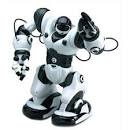Around the world, around a billion people have a disability, says the World Health Organization.
In Europe and America, this is one in five individuals. What’s more, since they are less inclined to be in work, their poverty rate is about twice as high. So technologies that could help impaired individuals contribute more in the workplace – and enhance their quality of life – are definitely welcome.
Furthermore, it additionally bodes well.
On the off chance that a million more incapacitated individuals could work, the UK economy alone would grow 1.7%, or £45bn ($64bn), says disability charity Scope.
The eyes have it Motor neuron ailment affects 400,000 individuals around the world, including famous scientist Professor Stephen Hawking. Multiple sclerosis affects 2.3 million. But neurons controlling eye movement are more resistant to degenerative ailments. This is additionally true of other parts of the face, similar to the cheek, which Prof Hawking uses to communicate. US organization LC Technologies has invented a gadget that empowers individuals to control the computer utilizing just their eyes. Eyegaze Edge is the latest invention of the organization, which was established in 1988 by a gathering of designers in a basement.
It tackled the fundamental scientific issues then, but the early gadget was bulky and extremely costly. “We packed it in back of a solitary motor plane and took it around to towns where there was a need,” says medicinal director Nancy Cleveland. “Presently, it fits in a suitcase in a business aircraft.” The technology behind Eyegaze is called Pupil Center/Corneal Reflection, or PCCR. A tablet is set up in front of the client, with a little camcorder underneath. A close infrared LED (light-emitting diode) light illuminates the client’s eye.
The camera then measures the distance between the center of your understudy and the reflection of LED light on your cornea – the transparent bit of your eye at the front.
This tiny distance shifts as your look changes, and this empowers a computer to work out exactly where you’re looking. “Individuals have done a wide range of interesting occupations,” says Ms. Cleveland, “and the sum total of what they had was the ability to move their eyes.”
She says in regards to 12 books have been written utilizing the gadget.
Head control
A comparable gadget is the HeadMouse Nano, recently created by Texas-based Origin Instruments.
A camera tracks the movements of a reflective dot stuck to the client’s temple, and these motions control a computer cursor. Selections are made utilizing a “taste puff” switch in the mouth, or by abiding time – to what extent the head stays in a certain position. It requires slightly more motor ability in its clients but is less expensive. “Lately, we’ve lessened size and power consumption,” says Origin’s VP Mel Dashner, who worked on tracking gadgets for aircraft amid the Cold War. “We’re basically riding the flood of wireless technology like every other person.”
‘Smart glasses’
There are about 39 million visually impaired individuals on the planet, as per the World Health Organization. But 90% have at least some level of light perception. So Stephen Hicks, a neuroscientist at Oxford University, has created “smart glasses” that accentuate the contrast between light and dull objects.
“We try to represent the world in straightforward and unambiguous continuous pictures,” he says.
The nearest picture is bright, though the rest of the field is dark, and the contrast between them is turned up to most extreme. Mr. Hicks started working on the glasses in 2010, with tech firm Epson giving the transparent computer shows.
He has since had additional assistance from the Royal National Institute for the Blind, and prize cash from a Google Impact Challenge grant.
The biggest test for him has been in holding the weight down – if the glasses measure more than 120g (4.2oz) wearers get cerebral pains, he says. So he has put the battery and preparing unit into a handset, connected to the glasses by a little link.
Talking hands
Technology can even help the 1.5 million individuals on the planet who are hard of hearing and visually impaired. Helen Keller, most broadly, was the first deafblind individual to procure a four-year education in liberal arts degree in 1904.
Deafblind individuals can communicate utilizing tactical alphabets – squeezing or squeezing different parts of the hand represents different letters.
Presently Nicholas Caporusso, from Bari in southern Italy, has built up a method for turning these movements and touches into electronic signs through an exceptional glove.
Sensors in his dbGLOVE turn these alphabet tracings into computer text, and actuators trace the letters back onto the hand. This will empower deafblind individuals to operate computers and smartphones.
Mr. Caporusso trusts the last gadget, which was produced with two partners from Finland – where Nokia has left a legacy of cell phone inventiveness – will be prepared early this year.
“The perfect match of Italian outline and Finnish technology,” Mr. Caporusso calls it.
The biggest test was measure, he says, as it is with huge numbers of these assistive technologies: “Every one of these links, actuators, and sensors are in a little space.”
‘Dependable signs’
Propels in 3D printing and bio-electronics are additionally supplanting missing appendages with prosthetics and give debilitated individuals extra functionality.
For instance, in 2014, Ontario-based Thalmic Labs discharged an armband called the Myo. It empowers a man to control computer gadgets by perusing the electricity delivered by their skeletal muscles and afterward sending these signs remotely by means of Bluetooth to the gadget.
In December 2015, scientists at Johns Hopkins University in Baltimore adapted this armband to control a prosthetic appendage.
Thalmic’s CEO, Stephen Lake, says Myo “slides right on the arm, with no surgery or skin prepared, and gives a great deal more dependable signs than you can get with electrodes.”
The technology was initially created to facilitate gesture-controlled presentations and has been utilized by DJs to control lighting shows.
What’s more, if such assistive technology can be utilized by non-incapacitated individuals, too, it can be made all the more inexpensively to the benefit of all.



